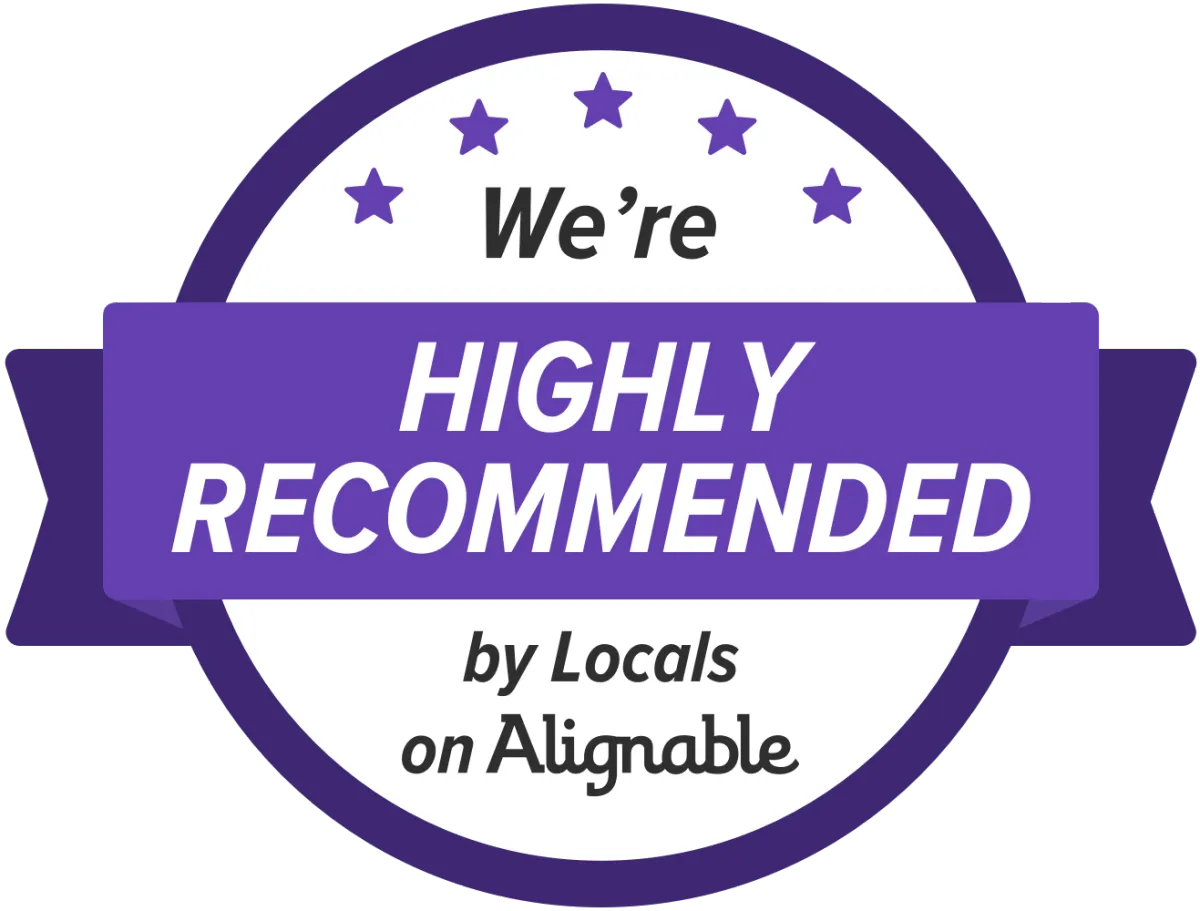Blog

Driving More Traffic to Your Physical Therapy Website: SEO Strategies | Blog
Understanding the world of today's digital frontier is crucial for any business, especially in the field of physical therapy. Every day, countless people turn to search engines like Google to find a therapist to tackle their aches, pains, or injuries gravely. Knowing this, how can you, as a physical therapist, guarantee that your practice is seen by those in need? In this rapidly-evolving digital landscape, Search Engine Optimization (SEO) has emerged as a vital tool for any business, with physical therapy practices being no exception. At the heart of SEO lies one goal - to improve your website's visibility on search engines. The higher your ranking on search engine result pages (SERPs), the more likely potential patients will visit your site. But the question remains: how can you leverage the power of SEO to drive more traffic to your physical therapy website, thereby increasing your patient pool? This article aims to answer that question, guiding you through quality keyword research, content creation, innovative local SEO techniques, and much more. As we delve into the nuances of these strategies, we also illuminate the broader significance of SEO in shaping user experiences online.
The physical therapy industry has been experiencing remarkable progress for several years, and indisputably, this upward curve of growth shows no signs of slowing down. Notably, as per the recent industry estimates and analysis, a colossal 36% industry growth is projected from 2012 to 2022.
The increase in physical therapy's prominence comes as no surprise. The growing awareness and recognition of the benefits of physical therapy interventions in improving quality of life and facilitating recovery have triggered an unprecedented demand for these services worldwide. This has been especially evident with the aging population and the increasing prevalence of chronic diseases such as arthritis and stroke, which often require extensive rehabilitation.
Unpacking the growth drivers of this burgeoning industry provides interesting insights:
Advancements in Physiotherapeutic Techniques: Modern physical therapy incorporates a host of innovative techniques to assist patients in recovery. This includes technologies like virtual reality and exoskeletons, which have shown promising results and drastically reduced recovery time.
Demand from the Aging Population: The rapidly growing elderly population is a significant growth driver for the physical therapy industry. Given their increased susceptibility to health conditions necessitating rehabilitative care, this demographic represents a considerable market segment.
Sports and Fitness Boom: In the era of fitness consciousness, sports and exercise-related injuries have become quite commonplace. These injuries, too, often require physical therapy to ensure a safe and efficient return to pre-injury levels.
Increasing Health Insurance Coverage: A significant factor aiding industry growth is the expanding scope of health insurance coverage. More insurance companies are now acknowledging the importance of physical therapy and are thus covering therapy costs in their policies.
Given the amalgamation of steadily rising demand, advanced physical therapy techniques, and growing insurance coverage, there's little doubt that the physical therapy industry will continue its impressive trajectory of growth. The coming decade looks all set to establish physical therapy as an essential aspect of healthcare, restoring physical functionality and enhancing millions of lives in the process.
In today's digital world, the way we interact and navigate the internet is rapidly changing. Nevertheless, one core aspect remains unchanged: search engines are at the heart of our online experiences. In fact, we can see that a mind-boggling 93% of online experiences start with a search engine, showcasing the undeniable importance of search engine optimization (SEO) in enhancing online user experience.
But how does SEO really impact these experiences?
First off, good SEO practices lead to improved website visibility. Engaging in effective SEO tactics can elevate a website's ranking on search engine results pages (SERPs), resulting in more clicks and online traffic. In a world where users are overwhelmed by information, efficiently guiding them to relevant content is key.
Secondly, SEO optimizes user navigation. A well-structured site appeals not only to search engine crawlers but also to users who appreciate an intuitive, effortless exploration of web pages. SEO involves organizing a site's content and architecture in a way that promotes easy navigation, ensuring web pages have clear categories, appropriate links, and a user-friendly layout.
Lastly, SEO prioritizes content relevance. Users are looking for value from their searches, and SEO works to cater to this need. By using targeted keywords in engaging and meaningful content, websites can attract and retain the right audience. Relevant content keeps users satisfied and willing to go through transactions, which translates to higher conversions.
These implications reveal the undeniable value of SEO in enhancing online user experience. It's clear that SEO isn't just about visibility, but about creating a positive, seamless experience for users. Any online marketing strategy that disregards the significance of SEO runs the risk of offering subpar online experiences and losing valuable traffic to competitors. It is an essential facet of the online world and its importance will only continue to grow in conjunction with technological advancements.
Using Keywords to Boost Website Traffic
The journey to exceptional SEO (Search Engine Optimization) begins with a keen understanding of keyword research to boost website traffic. This critical stage of SEO, performed before any optimization is applied, illuminates the road map to enhancing your website visibility in search engine results.
Essentially, keyword research holds the key to understanding the specific language users employ while looking for your services or products. This deciphered 'search language' can then be applied to your content, allowing the search engine to identify and present you as the answer to the user's 'internet queries.'
Why Keyword Research?
You may be wondering, 'Why all the fuss about keywords?' Here’s a digestible breakdown of its importance:
Relevance: Performing thorough keyword research helps identify relevant targets to use in SEO for physical therapy practices. By dialing into the user’s perspective, you generate the right terminology that brings your services into the limelight. Utilize a mix of broad and specific keywords to effectively capture different search intentions related to your product or service.
Ranking: Keywords act as bait to hook your site higher up the ranks on search engine result pages (SERPs). High visibility translates to more clicks, creating a snowball effect of even greater online visibility and subsequent customer acquisition.
Insight: Beyond simply boosting your online presence, keyword research provides valuable customer insight. Scrutinizing keyword metrics can reveal the popular trends and preferences in the market sphere, positioning you to make data-driven adjustments fitting your audience's needs.
Crafting your Keyword Strategy
Wondering how you could weave this magic for your own website? Here are some steps to craft an effectual keyword strategy:
Brainstorm Broadly: Start by creating an extensive list of relevant topics connected to your services or products. Dig into the mind of the searcher. What words or phrases would they use when looking for your offerings?
Conduct Keyword Research: Next, employ keyword research tools to identify high-volume, low-competition keywords related to your listed topics. This crucial step balances attracting a large audience while avoiding over-saturated markets.
Analyze the Competitors: Examine the keywords that your competitors are ranking for. While you shouldn't copy them verbatim, you can learn a lot from their strategies and pinpoint gaps that you might fill.
Refine and Apply: Finally, refine your keywords to ensure they align with your SEO goals and apply them appropriately across your website, from text content to image tags.
Remember, keywords aren't the magical sprinkle that will immediately shoot your website to the top of the SERPs. They are, however, a compelling starting point toward a strategic SEO plan that will continually boost your online visibility.
So, get savvy with your keyword research, and unlock the potential of SEO to draw potential customers directly to your (virtual) doorstep.
Crafting Great Content to Engage Clients (and Search Engines)
Content creation plays a significant role in improving a website's SEO (Search Engine Optimization). In the digital age where content is king, it's crucial to understand how to craft material that appeals to both audiences and search engines. Most of the time, they leverage both blog posts and condition-specific pages to bolster their rankings on search engines further.
Blog Posts
Blog posts form the backbone of most websites' content strategy. They not only provide a platform for sharing insights, updates, and thought leadership on various subject matters but also significantly contribute to a site's SEO.
Variety of Topics: With blog posts, the opportunities are endless. They allow websites to cover a wide range of keywords and topics pertinent to their industry, widening the website's reach on search engines.
Fresh Content: Browsers enjoy fresh content. Regularly updating a blog causes search engines to crawl the site more often, thereby potentially boosting its ranking.
Keywords Density: Blog posts create a fertile ground for naturally incorporating relevant keywords into a website's content.
The beauty of blogs lies in their flexibility: long pieces, short articles, interviews, how-to guides, listicles - the formats are endless!
Condition-specific Pages
Condition-specific pages are significant, especially for businesses in the healthcare or wellness sectors. These pages target specific conditions or treatments, capturing traffic from relevant keywords. Meanwhile, search engines appreciate and rank highly for these specific, detailed pages that answer user queries accurately.
Here's why condition-specific pages provide such value:
Focused Keywords: Each page targets a specific condition, allowing for a tight, focused grouping of keywords relevant to that condition.
User Interest: People searching online for information on a particular condition are likely to be highly engaged - they're either suffering from the condition or know someone who is. Thus, these pages tend to have high time-on-page metrics.
Trust-building: Detailed, accurate information about a specific condition can establish a website as a trusted source of information.
Both well-crafted blog posts and condition-specific pages can enhance SEO performance and drive relevant, quality traffic to a website. By practicing effective content creation for SEO, businesses have the opportunity to reach more potential customers than they ever could offline. It's not just about algorithms, it's also about delivering value to visitors - that's the true essence of great SEO.
Targeted Marketing Using Unique Selling Points and Niches
Identifying your business's unique selling points (USPs) and niches can massively enhance the effectiveness of an SEO strategy. The world of SEO is intricate and increasingly competitive, but understanding how your distinct attributes can increase your visibility may provide you with that extra edge required to outshine your rivals.
First things first, let's demystify the concept of USPs and niches. A unique selling point is what sets your product or service apart from others in your sector. Meanwhile, a niche is a specific area of the market with unique needs and preferences, which ideally suits a particular product or services' offerings.
For instance, if your company fabricates eco-friendly activewear, your USP might be the sustainable materials you employ, while your niche could be fitness enthusiasts who prioritize environmental sustainability. Your SEO strategy can uniquely tailor to connect with this specific audience, creating a more effective and targeted approach.
So how can you improve your SEO with unique selling points and niches? Dive into the steps below:
Identify Your USP: The initial step is to understand your USP clearly. Here, you should concentrate on analyzing what sets your brand apart from others in your industry. It could be anything from excellent customer service, an innovative product feature, to a sustainability ethos.
Define Your Niche: Next, identify the unique segment of the market that your product or service would best serve. This segment should appreciate and value your USP. This target audience's needs and preferences should guide your SEO strategy.
Incorporate Your USP and Niche into Your SEO Strategy: Begin by conducting keyword research based on your USP and niche. This includes finding relevant terms, exploring related search queries, and analyzing your competition's keyword strategy. Keyword incorporation into your SEO strategy will not only drive traffic but ensure the traffic you draw aligns with your distinct offering.
Create Engaging Content: Crafting compelling, informative content tailored to your niche audience can significantly boost your SEO effectiveness. Use your USP to intrigue and sway your audience. Appeal to their interests and demonstrate how your product or service fills a specific need.
Optimize Metadata: Metadata, including page titles, descriptions, and image alt text, should represent your USP and resonate with your niche audience. This provides an opportunity to incorporate relevant keywords and convey your unique offering directly to search engine users.
Indeed, by embracing your unique selling point and identifying your niche market, you can drive your SEO strategy in a more focused direction. It ensures you attract the right traffic that appreciates the unique offering you bring to the market, resulting in a more impactful online presence and improved business returns. Remember, it's not just about being noticed; it's about being noticed by the right bunch!
Strategies to Optimize Local Visibility
If you're a physical therapy provider looking to boost footfall in your clinic, savvier than ever consumers have taught us one thing: online visibility is critical. To achieve this, leveraging local SEO strategies can be an effective approach to increase traffic to your physical therapy website, often translating to more actual appointments. Let's explore three of these impactful strategies - improving your Google Business Profile Listing, garnering positive online reviews, and creating locally-focused content.
Optimizing Google Business Profile Listing
First on your local SEO checklist should be refining your Google Business Profile Listing. This internet-based service by Google itself is a free, easy to set up platform tailored for local businesses. A well-optimized listing can dramatically enhance your online visibility, making your practice easy to find for potential patients actively looking for physical therapy providers in their region.
To get started, complete your listing with accurate and detailed information, including:
The name of your practice
Address
Contact numbers
Operating hours
Services offered
Next, add relevant photos that genuinely represent your practice - the facility, the staff, the treatment areas, and before and after photos, if possible. Consistently stay engaged by responding to customer reviews and posting regular updates about your practice and any changes to operational hours or services. In essence, up-to-date and informative listings reflect positively on your practice and can influence up to 63% of PT patients in their provider selection.
Generating Positive Online Reviews
The digital age gives considerable power to client reviews. A plethora of positive reviews can significantly sway potential patients' decision-making and improve your standing in online search results simultaneously.
Encourage satisfied clients to write a review of their positive experiences. You can make this process easier by providing clear instructions on where and how to leave reviews. Respond promptly to all reviews (positive and negative), demonstrating your practice's commitment to client satisfaction. In times of negative reviews, address the issues raised professionally, offering solutions if possible. These interactions reveal your dedication to delivering superior physical therapy services.
Locally Focused Content Creation
Last, but certainly not least, is the creation of locally-focused content. This tactic can be a game-changer in connecting you with local clients. Often, geographical relevance can tip the scales in your favor when potential clients are sifting through multiple providers.
Explore hyper-local content that revolves around physical therapy topics pertinent to your local community. For example, if you're in an area with a predominantly older population, content on managing arthritis or exercises for senior citizens might appeal more.
Additionally, consider collaborating with local influencers or figures to create content. This establishes a sense of community among your audience, making your practice more relatable and trustworthy.
So there you have it - these local SEO tactics can contribute immensely to your online presence and, ultimately, the success of your physical therapy clinic. Remember, it's about being visible and relevant, and these strategies are tried and tested ways to get there.
Using Social Media Platforms to Create Authority and Trust
Social media platforms are not just for connecting with people. In the current age of digital marketing, they have evolved into powerful tools that can skyrocket your website's traffic and lead generation. Actively promoting blog posts on social media can enhance not only your website visibility but also incite curiosity among users about the content you offer.
Harnessing the potential of social media platforms can seem daunting initially. However, once aligned with a strategy, they can prove to be a game-changer. Here are some straightforward tactics that can be executed to boost website traffic through social media:
Engage with Your Audience
Interaction is fundamental to social media. By engaging in conversation and responding carefully to comments, not only do you foster a community but that friendly atmosphere also becomes a virtual magnet, drawing more visitors to your website.
Use Visual Content
People are visual creatures. They are more likely to click on a post with captivating visuals. Leverage this by using engaging images, infographics or videos in your posts.
Promote Your Blog Posts
Remember to promote your blog posts actively on your social media platforms. A well-crafted post can promote curiosity and direct traffic to your website.
Post Consistently
Consistency is a major factor in gaining followers. Regularly posting quality content shows your audience that you're actively engaged in providing value.
Use Hashtags Wisely
Including popular or trending hashtags related to your content can increase the visibility of your post. However, ensure not to overuse them, as it may seem spammy and distract from your content's main message.
As they say, content is king, but promotion is queen. The real trick to driving website traffic lies in finding a balance between creating valuable content and promoting it in the right way. The world of social media can come with its challenges, and there's always more to learn, but keep these tips in mind to steer yourself towards boosting your website traffic.
With the sheer amount of content swimming around the Internet seas, it's only natural for some of your creative efforts to drown in the depths instead of sailing high on the visibility wave of search engines. Fear not! There are strategies to rescue and revive this low-ranking content using cues from your top-performing competitors.
Let's talk rescue mission first. Revitalizing your low-ranking content isn't as hard as it appears. Here's your action plan:
Reevaluate Your Keywords: Check whether your selected keywords are too competitive or insufficiently tailored to your target audience. Maybe it's time for a change, looking for more niche, long-tail keywords instead.
Update Your Content: Outdated information can lead to lower rankings. Regularly revisiting your content to update statistics, information or even grammar and spelling can make a world of difference.
Improve User Experience: Slow loading times, broken links, or poor design can adversely affect your page rankings. Optimize these areas for a smoother, more enjoyable user experience.
Side note: Excellent user experience isn't about aesthetic appeal alone. It includes the undercover details that welcome and guide a visitor through your site like a well-trained concierge.
Researching Your Competitors Approach to SEO
Switching gears, let's now study the winning strategies of your competitors to increase your SEO rankings. What are the key elements driving their success? What can you assimilate from their approach?
Check Their Backlinks: There are a plethora of backlink checking tools that can provide insights into where your competitor's traffic is coming from. Using this data can open doors to similar opportunities.
Analyze Their Content: Go through their top-ranking pages. Is it long-form or bite-sized content? Do they use infographics, images, or videos? Understanding these dynamics can offer clarity on what your audience finds engaging.
What's Their Social Game Like: Sharing and engagement on social media platforms can contribute to higher rankings. So, keep an eye on their social media activities.
Remember that revitalizing your content and emulating competitors isn't about quick wins. It's about establishing long-term SEO strategies that continuously improve your content and the user experience. The go-getter in you can turn this tide. After all, what's better than setting the bar higher each time? Just one word - surpassing it!
Why SEO is Important for Physical Therapy Businesses
Physical therapy practitioners may overlook the importance of optimizing their online presence. If your healthcare practice isn't easily discoverable in the vast digital world, you might be missing out on potential patients who are actively seeking your services. Here's where Search Engine Optimization (SEO) comes in, offering considerable benefits that can significantly improve the visibility and profitability of physical therapy websites.
Firstly, SEO is instrumental in driving increased website traffic. Although it may not happen overnight, a well-implemented SEO strategy ensures a consistent growth in traffic. By using relevant keywords, proper meta tags and valuable content, SEO makes your website more accessible to people seeking physical therapy services online. Over time, increased visibility on search engines like Google corresponds to a higher number of website visitors, and ultimately, more potential patients.
Secondly, SEO helps boost conversions. Once you get website visitors through SEO, the next step is converting these visitors into patients. Thankfully, SEO does not just increase traffic, but also enhances the user experience on your website, making it more likely for visitors to take a desired action like booking an appointment. Improving aspects of your website such as loading speed, mobile optimization, and easy navigation are part of a comprehensive SEO approach and are key points in convincing a potential patient to choose your service over others.
However, that's not all! An essential advantage of SEO is that it drives 'organic' traffic. The term organic, in this context, refers to visitors who land on your website via unpaid search results. Interestingly, studies underline that organic traffic often yields more effective results than paid online advertising because these users specifically searched for what you offer. Organic visitors are likely already interested in physical therapy services, rather than being casually exposed to an ad. This genuine interest frequently translates to higher engagement and conversion rates.
The potential SEO brings to the table for physical therapy websites is significant - increased web traffic, heightened conversions, and enhanced organic reach are just a taste of the benefits. Therapists need not get overwhelmed by the technical intricacies of SEO. With a small investment of time and resources, they can reap the benefits of SEO and improve the digital footprint of their practice significantly. After all, physical therapists excel at helping patients regain their strength - shouldn’t their online presence be just as strong?
When it comes to the realm of the digital, search engines occupy a paramount role, with Google being a predominant force. Today, we not only ask Google what the weather is going to be like or seek recommendations for nearby restaurants, but we also turn to it for health-related advice. In light of emerging data suggesting that a staggering 5% of all Google searches are geared towards health issues, it's clear that a massive opportunity exists for medical platforms, especially for sites offering physical therapy.
Largely unnoticed, this percentage of health-related queries has created an extensive field where thousands of online users are seeking both advice and solutions for their ailments. Despite the significant amount of health information available on the internet, it's rather challenging to sift through this cluttered arena to find reliable and pertinent content.
For someone grappling with muscle pain or a sports injury, being met with a series of conflicting or vague answers on the internet can lead to more confusion and potential health risks. That's exactly where medical websites, particularly those concerning physical therapy, can capitalize on this clarion call to provide accurate and relevant health advice.
Creating specific, targeted content that responds aptly to users' health-related questions isn't just beneficial to the user, but also aids in elevating your digital presence by:
Driving significant traffic to your site
Enhancing your credibility by sharing expert knowledge
Cultivating a loyal audience that appreciates the value you provide
Improving your website's SEO rank due to enhanced user-experience
While these benefits certainly make a compelling case for medical website administrators to optimize their sites, it's also worth noting the importance of responsible content curation concerning health-related topics. Removing medical jargon, ensuring information accuracy, and needless to say, promoting a disclaimer that online advice shouldn't replace a professional medical consultation are all key measures to consider.
Health-related searches have successfully paved the way for medical websites to expand their digital footprint while making health information more accessible and reliable for internet users. Needless to say, a careful balance between SEO optimization and responsible content sharing is imperative in this process.
In this digital age, where information is a mere click away, medical platforms need to leverage this ubiquitous trend of health-related searches to their advantage. By tailoring targeted content with an emphasis on reputable and easy-to-understand health advice, these platforms can enhance their visibility, increase user engagement, and make a significant impact in the world of digital health.
Employing the power of analytics is one of the most potent means to evaluate and refine your website performance. Data from Google Analytics provides not just numbers, but the story behind those figures. Using this tool for your physical therapy website, for instance, allows you to keep your finger on the pulse of numerous crucial metrics - visitor counts, click-through rates, page views, and even bounce rates. Gleaning insights from these figures could significantly steer your online strategy in the right direction.
Understanding Your Audience
Undoubtedly, Google Analytics delivers a plethora of data points. But how do these figures help understand your audience better? Each page view, session duration, or geographical statistics can tell you a lot about your audience.
Page views: This signifies how many times a particular page has been viewed. The more views a page has, the more it resonates with your audience.
Session duration: This tells you the average time a user spends on your website. If the duration is high, it indicates users find your content engaging.
Geographical statistics: The area from where majority of your audience hail is crucial. This lets you know if your local SEO efforts are paying off.
Setting Up Goals and Measuring Success
Not only does Google Analytics shed light on your audience behavior, but it also helps set measurable, time-bound goals for your website. Be it increasing traffic, lowering bounce rates, or enhancing user-friendliness – each goal can be directly monitored and measured within Analytics.
Here's a helpful hint: Try to keep your goals specific and realistic. Instead of aiming to double your website traffic in a month, target a 10% rise. Gradual progress often helps in sustaining long-term growth.
Towards More Informed Decision Making
In the vast ocean of digital data, Google Analytics acts as a beacon, guiding your website strategies based on concrete figures, rather than assumptions or hit-and-miss tactics. Your physical therapy website is no different. By tracking performance with analytics, you gather real-time insights, gauge success rates of your strategies, and make more informed decisions to improve user experience and boost your online presence.
Now, who wouldn't want that for their business? Remember, data indeed speak louder than words when it comes to website optimization. Pay heed to the intriguing tale your metrics tell, and you're likely to chart a successful course for your website.
Embracing SEO and its multifaceted strategies provides physical therapists with a tremendous opportunity to attract more patients and grow their practices. It's about being visible where your potential patients are looking - in online searches and local directories, on social media platforms, and across various blog posts or articles.
By establishing a firm foundation built on keyword research, targeted content creation, unique selling points, and robust local SEO strategies, physical therapy clinics can significantly increase the visibility of their websites. Moreover, revitalizing low-ranking content can give way to new possibilities, and learning from competitors can provide insights into what patients are looking for.
The boom in health-related searches indicates a massive potential for professionals in the physical therapy industry to extend their reach. Learning how patients perceive and respond to their online experience is vital in improving your service to accommodate their needs better.
Lastly, armed with the power of performance analytics, physical therapists can streamline their strategies by focusing on what works and adapt where improvements are needed. It's about leveraging every tool and strategy that fits specific needs, targets the right audience, and beefs up online predominance.
In a digitally-mediated world, your physical therapy website is your virtual storefront. Make it inviting, enlightening, and user-friendly. With a clever blend of the right SEO techniques, your virtual front door can funnel in a continuous stream of patients eager for your professional services.
Frequently Asked Questions
What are some effective SEO strategies to drive more traffic to a physical therapy website?
Some effective SEO strategies to drive more traffic to a physical therapy website include: 1. Optimizing website content with relevant keywords, 2. Creating informative and engaging blog posts, 3. Building high-quality backlinks from reputable websites, 4. Utilizing local SEO techniques such as creating Google My Business listing, and 5. Optimizing website speed and mobile-friendliness.How long does it take to see results from SEO efforts for a physical therapy website?
The timeline to see results from SEO efforts for a physical therapy website can vary depending on various factors such as the competition in your local area, keyword difficulty, website age, and the quality and consistency of your SEO efforts. Generally, it takes several months to start seeing noticeable improvements in search engine rankings and organic traffic.Is it necessary to hire an SEO agency or consultant for a physical therapy website?
While it's not mandatory to hire an SEO agency or consultant, it can be beneficial for a physical therapy website as they specialize in SEO and can provide expertise, implement advanced strategies, and monitor performance. However, if you have the knowledge and resources, you can also implement SEO strategies on your own.Do social media platforms affect the SEO of a physical therapy website?
While social media platforms do not directly impact the SEO of a physical therapy website in terms of search engine rankings, they can indirectly contribute to SEO success by increasing brand visibility, driving traffic to the website, and generating backlinks from shared content.
How often should I update the content on my physical therapy website for better SEO?
Regularly updating the content on your physical therapy website is crucial for better SEO. Aim to add fresh and relevant content through blog posts, treatment guides, patient testimonials, and educational resources. Updating content at least once a week can help search engines recognize your website as up-to-date and improve rankings.
Get Your Free Digital Marketing Audit!
© Copyright 2025. Roaring Fork Marketing LLC. All rights reserved.
10 Liberty Rd, Hingham, MA 02043, https://roaringforkmarketing.com/















